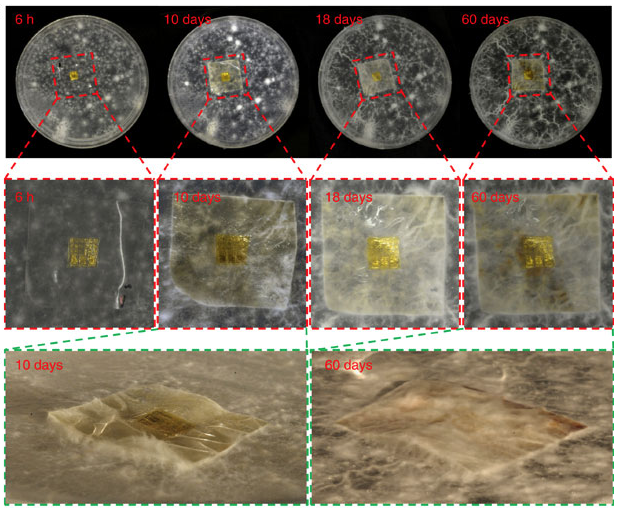Wood-Electronics: High-performance green flexible electronics based on biodegradable cellulose nanofibril paper Remove “Wood…


Wood-Electronics: High-performance green flexible electronics based on biodegradable cellulose nanofibril paper
Remove “Wood Electronics” and you have the title of a new paper, recently published in nature by scientiests from the University of Wisconsin working in partnership with the US Department of Agriculture Forest Products Laboratory.
The researchers developed wooden semiconductors, high-performance flexible electronics using ecofriendly materials, that are biodegradable and basically just act like plant fertilizer in the environment (turns out that fungi like it).
Today’s consumer electronics, such as cell phones, tablets and other portable electronic devices, are typically made of non-renewable, non-biodegradable, and sometimes potentially toxic (for example, gallium arsenide) materials. These consumer electronics are frequently upgraded or discarded, leading to serious environmental contamination. Thus, electronic systems consisting of renewable and biodegradable materials and minimal amount of potentially toxic materials are desirable. Here we report high-performance flexible microwave and digital electronics that consume the smallest amount of potentially toxic materials on biobased, biodegradable and flexible cellulose nanofibril papers.
Furthermore, we demonstrate gallium arsenide microwave devices, the consumer wireless workhorse, in a transferrable thin-film form. Successful fabrication of key electrical components on the flexible cellulose nanofibril paper with comparable performance to their rigid counterparts and clear demonstration of fungal biodegradation of the cellulose-nanofibril-based electronics suggest that it is feasible to fabricate high-performance flexible electronics using ecofriendly materials.
Who would have thought? Wood as a cutting-edge semiconductor material. Nice.